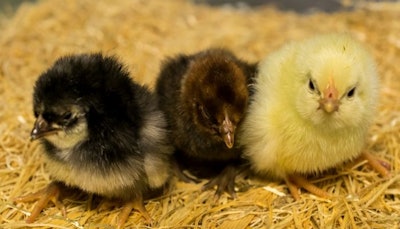
The first generation of special genetic lines are populating the Hy-Line Genetics Research wing of the new Robert T. Hamilton Poultry Research and Teaching Farm at Iowa State University (ISU). Dr. Susan J. Lamont, professor of animal sciences at the university recently sat down with Deven King, managing editor of Egg Industry Insight to talk about the special birds.
Lamont has been the curator of the genetics lines at Iowa State University since she arrived as a faculty member in 1983.
KING: What makes these genetic lines special?
LAMONT: Most of the lines pre-date my time at ISU, however, with the oldest line having been established in 1925. The eight ISU chicken genetics lines have been developed to serve as a discovery platform for deeper understanding of the genetics that controls important traits of poultry. These traits include things such as natural resistance to disease, good response to vaccines, and resilience to environmental stressors such as heat. Most of the lines do not exist at any other location.
KING: How long did it take to make this genetic change?
LAMONT: In contrast to commercial genetic lines, these research lines are not under directed selection to make genetic changes over time. The variation among the lines and characteristics within these lines are the result of two primary factors. The first factor is which original stock was used to establish each different line at Iowa State. Several lines were established from commercial populations that were available at that time. Others trace back to breeds that originated in Egypt (Fayoumi) or in Spain, and were imported to the US in the 1950s. As you might imagine, chickens of 1925 or the 1950s are quite different than today’s production birds. The second factor, for most of the lines, is the practice of inbreeding of the individual line to produce a line of closely related individuals so that the genetics of each bird within a specific line is very similar.
KING: What are the benefits of these genetic lines?
LAMONT: There are multiple benefits to these genetic lines. The inbreeding of the lines provides a consistency among the individual birds of each line that makes molecular studies more efficient and the results more clear. The total set of eight lines is very diverse, with representatives of very old commercial lines, small and large body sizes, and some lines that are very distinct from commercial type birds. The large contrasts among the different lines helps to facilitate efficient research on the genetic control of these differences. For example, by comparing the Fayoumi lines, which originated as hardy birds in the harsh environment in Egypt, with lines of commercial origin, we have been able to identify some of the genetic variation that aids the Fayoumi’s resilience to heat stress and to infections.
KING: It is my understanding that these birds require special equipment, why?
LAMONT: It is not common to have a genetics research program that has birds with such large size differences. We have lines that are the size of very small layers as well as a broiler line.
These genetic lines, therefore, require specialized housing with cages of different sizes to keep the birds safe and healthy. Importantly, it is critical to have accurate pedigree information of each chick hatched. The hens are in individual cages and the roll-out area has egg dividers to keep eggs of each hen separated. The labelled eggs are then grouped by hen in the hatching unit so that each group of full-sibs is accurately identified.
KING: What type of research are you doing with them now?
LAMONT: Current genetics research is focusing on analyzing samples in the laboratory that were collected in recent studies. Studies included response to heat, and to pathogens including avian pathogenic E. coli, Newcastle disease virus, and avian influenza. Studying the live birds’ response and collecting samples from them is followed by years of detailed laboratory and statistical analysis to determine what genetic markers are associated with control of different desirable traits.
KING: What will be the next steps for these birds or the genetic line?
LAMONT: For this genetics program, there are always two “next steps”. The first step is to reproduce and maintain each of the breeding lines so that they continue to be available in the future. The second step is to start new research. Now that the successful transfer of the genetic lines to the new farm has been completed, new collaborative studies are being planned. Most studies are done in collaboration, to gain the benefit of researchers with diverse expertise working together. In the past, fertile eggs, day-old chicks, or samples from studies at ISU on these lines have been shared with scientific collaborators across the U.S., including Delaware, Maryland, Texas, California and Michigan.
KING: What is the end goal with these birds?
LAMONT: The overall objective is to elucidate the genetic control of important traits in poultry. This will enhance fundamental scientific understanding as well as identify biomarkers of practical use to the breeding industry in improving genetic selection practices for efficient and healthy poultry and poultry products.

















